Rotolight AEOS at a glance:
- £899 including VAT
- 5,750 lux at 3ft (ISO 200)
- 3,150K-6,300K colour range
- 295mm (diameter) x 20mm/1.4kg
- www.rotolight.com
LED lighting has generally been the preserve of videographers, who need continuous lighting, rather than stills shooters who have traditionally favoured more powerful flash kit. But Rotolight has been working to change that in recent years with products targeting both video and stills photographers. So what has changed to make LED technology more relevant?
Well firstly, camera sensors have improved to the point where shooting at ISOs higher than 100 is no longer a last resort, so outright power output isn’t the be-all and end-all it used to be. Secondly the growth of mirrorless cameras, with their electronic viewfinders, has given rise to a growing what-you-see-is-what-you-get culture in which photographers want to see their image in the viewfinder before pressing the button, rather than the monotonous cycle of shooting/reviewing/tweaking that you have to go through using DSLRs and flash. Only continuous lighting makes that possible.

Meanwhile, stepping in to fill this demand comes Rotolight, which has been innovating with LED technology to provide more power and a range of features tailored to stills photographers. For example its latest light, the AEOS, features a unique strobe flash feature which increases output by 200% for those times when the continuous light isn’t quite bright enough. What’s more, the flash offers a few tricks that a traditional strobe can’t compete with. It has no recycle time, so you can use it for burst shooting and it’ll keep flashing until you stop firing and, thanks to its bi-colour LED panel, it’s the world’s first flash head with an adjustable colour temperature, so you’ll never need to mess about with gels.
Weighing in at 1.4kg the AEOS is a fraction of the size of the company’s big ANOVA studio light, but much bigger and more powerful than its hotshoe-mountable NEO. It’s still holdable with one hand though, thanks to the built-in aluminium handles, and light enough to mount on a tripod using the ball head that it comes with, so you don’t need dedicated light stands.
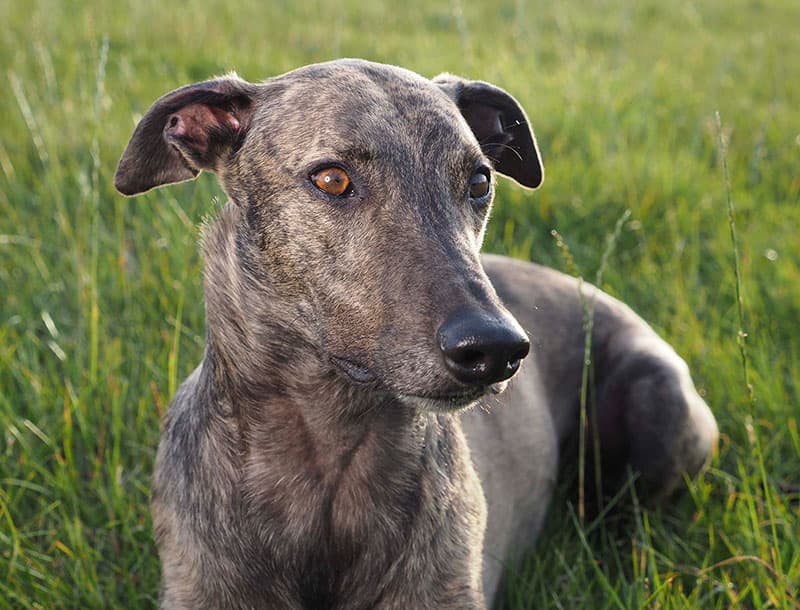
AP Editor Nigel Atherton used the AEOS of photograph his dog on location on the South Downs. © Nigel Atherton
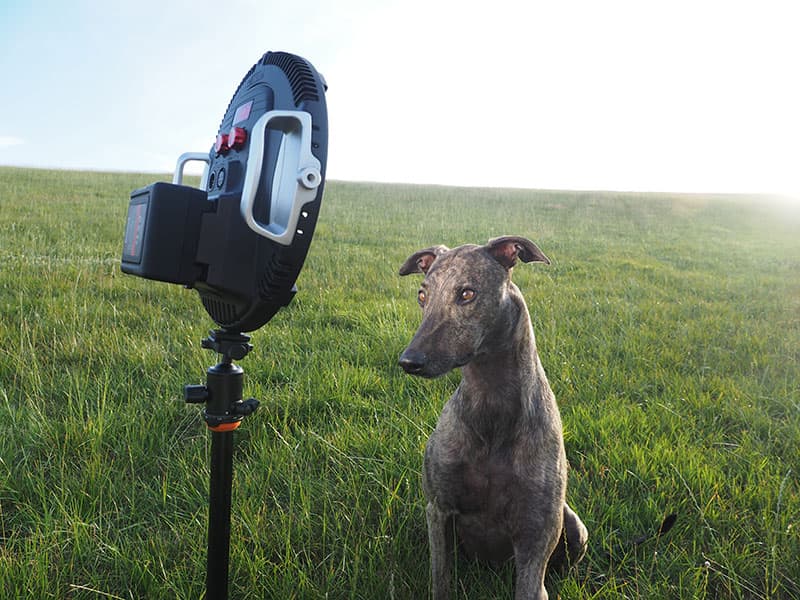
The AEOS is light enough to carry to remote locations. © Nigel Atherton
This means that although it can be used in the studio or at home, the AEOS comes into its own as a location light. There are of course portable monolight strobes available that already cover this sector, but the AEOS consumes considerably less power. Rotolight claims three hours of continuous lighting time, or a whopping 150,000 full power flashes, from a fully charged RL-95 battery, which uses the standad V-lock mount. Alternatively the AEOS comes with an AC adapter if you have access to a mains power supply.
AEOS controls
The back of the AEOS contains only three controls: a rubberised power on/off button and two dials. The first of these controls the brightness level. This is indicated on the LCD display as a percentage or, in True Aperture Dimming mode, as an f/stop. The other dial sets the colour temperature, variable from 3,150K to 6,300K – achieved by altering the brightness ratio between the daylight and tungsten balanced LEDs on the panel. Pressing both dials together takes you into the menu, where you can cycle through the flash, special effects and other menus.
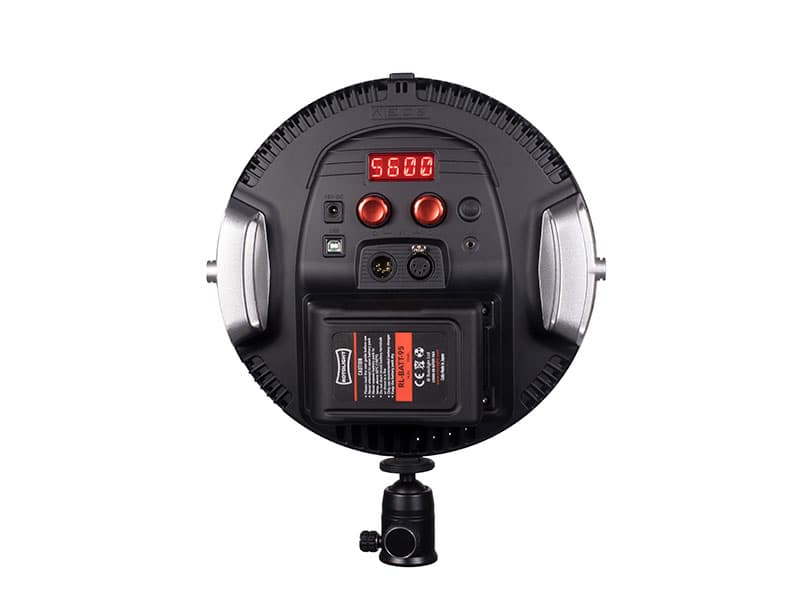
One of the most interesting settings for stills photographers is the True Aperture Dimming mode, which is great for when you want to shoot at a specific aperture, or when you want to know what aperture you should use at a given brightness level (useful for film users, for example, who can’t shoot and review). In this mode you tell the light your ISO setting and subject distance and as you adjust the brightness the LCD displays the aperture that will provide the correct exposure. So if, as a portrait photographer for example, you want to shoot at f/2.8 to achieve a nice shallow depth of field, you simply turn down the brightness until the display reads f/2.8.
As a continuous light the AEOS is at its brightest at 4,200K, when all of the LEDs are at maximum output, but if this isn’t bright enough, the flash mode doubles the output. The AEOS is capable of high-speed sync shooting (HSS), with compatible equipment.
In flash mode the left dial sets the modeling light brightness and the right dial sets the flash output and duration, up to 1/2,500sec. A 3.5mm input jack allows synchronisation by cable or a wireless trigger, such as those by Pocket Wizard and Phottix.
Despite its light weight, the AEOS feels sturdy and well made, from high-quality materials. Accessories such as the optional barn doors attach via the two tripod sockets at the top and bottom of the light, plus two additional threaded sockets on the sides, and the well-designed optional carrying bag can take two AEOS lights, plus batteries, mains cables and accessories.
The Pro’s view
AP’s Studio Manager, Andrew Sydenham, assesses the AEOS.
As soon as I slid the Rotolight AEOS from its case I could tell it was a very different and original light source, equally at home on location or the studio, and a true stills/video hybrid. Shooting some portraits of our model, Hollie, on location in daylight, I was impressed that it was possible to handhold the light and shoot at the same time, although stand mounting or having an assistant offers greater versatility. The catchlight in the eyes from the circular LED array is really beautiful and being able to easily adjust the colour and intensity on the fly is a real advantage.

Lit with natural light, boosted by a single AEOS head about 1.5 metres from the subject. Note the attractive catchlights. © Andrew Sydenham
Shooting in strobe mode using a Phottix trigger, and not having to even consider the recycling time (which is instantaneous) is absolutely unique with this type of source. Its 5,750 lux output is astonishingly powerful for its size, but it can’t quite match strong daylight and it has to be close to the model to give impact. Given its power, the 3-hour battery life is exceptional.
The menu system, with its two dials on the rear of the unit, is pretty intuitive and with a little experience you can obtain the settings you require easily. I particularly liked the barn doors which are robust, easy to attach and big enough to control the light spill effectively.
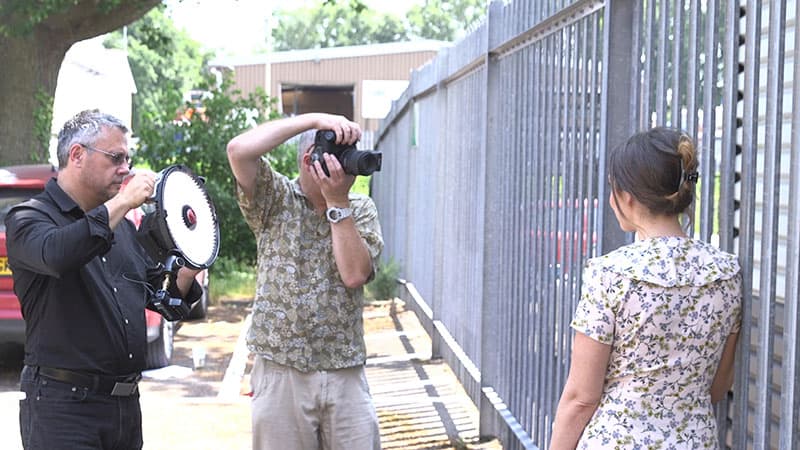
The set up used for the portrait shown above. © Dan Laughton
In the studio, using the AEOS to light a product shot was equally rewarding. The quality of light is exquisite from the outset and powerful enough to survive being diffused and shaped to give the required effects. Also, the LED panel is cool in operation, producing very little heat – making it comfortable to use for extended periods in the studio.
As a video light
AP’s Digital Editor, Jon Devo, used the AEOS on a video shoot.
There are a few things to love about the Rotolight AEOS from a video perspective, not least its incredible portability, tactile controls, including two aluminium handles and flicker-free constant output.
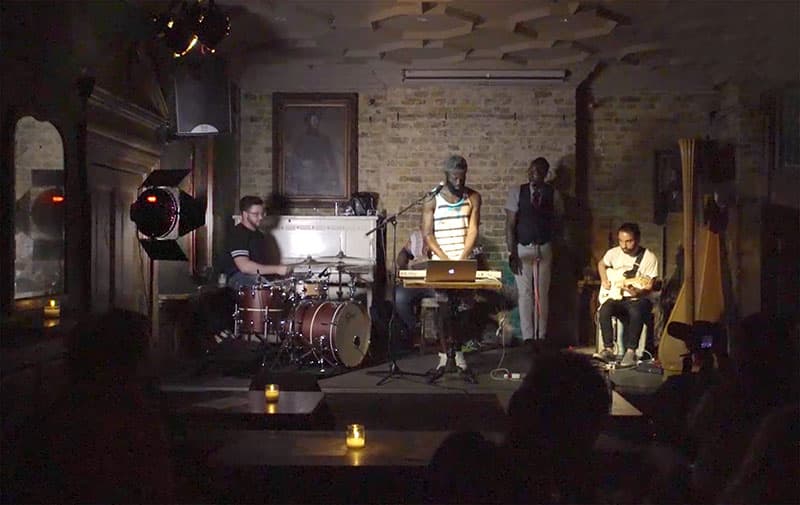
We used the AEOS to film a live music gig. © Jon Devo
The week that the AEOS came in to the office I was tasked with filming a live music gig and was told that the lighting scenario at the venue could be ‘sketchy’, so I took the AEOS head with me. More often than not I’m a one-man band so I need to be able to carry everything, and I don’t own a car so portability is one of my main considerations when investing in kit. Our AEOS unit came in Rotolight’s soft, water-resistant carry case, measuring 20.4×19.9×5.7 inches, enough to fit two AEOS heads. The bag has two small zip pockets on its sides and one large one on the front, for barn doors, cables and accessories. It also can be worn using the accompanied padded shoulder strap – perfect for someone like me who’s often got a tripod case over one shoulder and a camera bag on my back.
On arriving at the venue, I was glad I brought the AEOS. The spotlit stage completely missed the drummer, so I quickly set up the AEOS on a lighting stand to the left of the stage. There were no power sockets on that side of the room, but thankfully I had the optional 95w/h V-mount battery, rated to last up to 3 hours – easily enough time. I used the dimmer and adjustable bi-colour LEDs to subtly blend the AEOS into the ambient lighting mix on stage, so I didn’t ruin the atmosphere and didn’t have to faff with gels and diffusers.

© Jon Devo
For more controlled lighting set-ups the AEOS also features a built-in fade and a range of programmable ‘CineSFX’ options; including lightning, fireplace, emergency vehicle siren and TV flicker simulations. In the right hands, the AEOS will add some great production value to independent productions.
The flexibility, portability and capability of the Rotolight AEOS makes it one of the handiest pieces of location lighting on the market.
First impressions

We used the AEOS for a variety of stills shoots over a couple of weeks, including both indoor and outdoor portraiture, a studio still life (all lit with flash) and a location pet portrait on the Sussex Downs, using continuous light. We also used it for several video shoots, including an interview, and a live music video. It handled everything we threw at it with aplomb. Its light weight, easy set up, variable colour temperature and ability to choose between flash or continuous illumination make the AEOS one of the most versatile and enjoyable lights that we have used.
At £899 (inc VAT), it couldn’t be described as cheap, but when you consider what it does, and the fact that you’d need more than one light to do what the AEOS does (and even then you wouldn’t get all of its features), we consider it good value for money.







